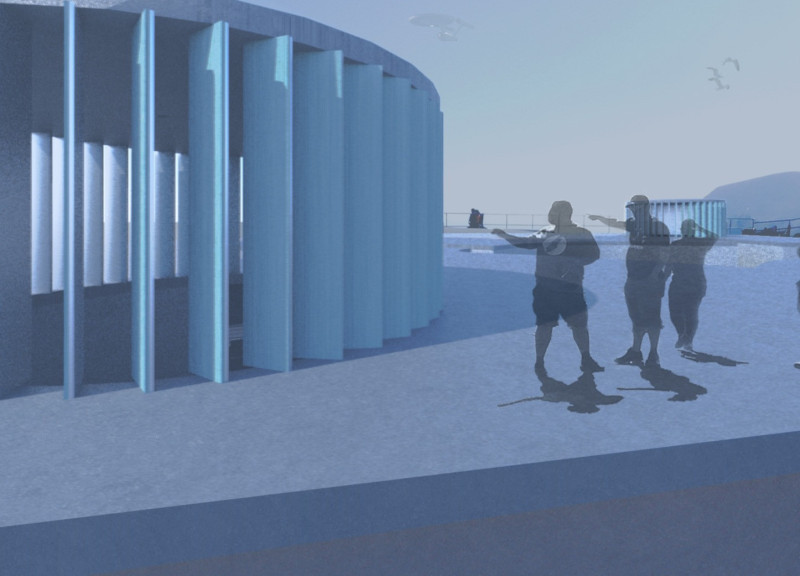5 key facts about this project
The "From Canons to Ploughshares" Pavilion of Humanity is an architectural project located in the Marin Headlands of California, specifically at the historic Battery Spencer. The pavilion represents a transformation of a former military fortification into a communal and educational space focused on humanity's interaction with nature. This transition underscores a narrative shift from defense to engagement, inviting visitors to reflect on their relationship with the environment.
The pavilion serves multiple functions, including a gathering space, an exhibition area, and a conference room. Each zone is designed to facilitate human connection and promote civic dialogue about environmental and societal themes. The exterior courtyard allows for spontaneous interactions, while the internal spaces are suited for organized events and exhibitions that highlight the pavilion's educational mission.
The design employs a combination of materials that emphasize sustainability and respond to the site’s historical context. Reusable insulated concrete blocks provide structural stability and thermal efficiency. Weathered copper panels add both aesthetic value and durability, while three layers of concrete slabs ensure the project's longevity and minimal waste during construction. This careful selection of materials reflects a commitment to ecological principles, reducing the overall carbon footprint of the structure.
Another key aspect of this design is its innovative use of natural ventilation and light. The pavilion features strategically placed openings and paneling that can adapt to the changing environmental conditions, enhancing user comfort while minimizing reliance on mechanical systems. This approach ensures a seamless integration with the natural surroundings, making the structure more resilient and adaptable.
The pavilion’s unique contribution lies in its historical reinterpretation and dedication to sustainability within an architectural framework. By transforming a military site into a community hub, this project encourages contemplation of past narratives while actively promoting environmental stewardship. The dialogue facilitated by the pavilion aims to redefine community relationships with historical sites and ecosystems.
For further insights into the architectural plans, sections, and designs that underpin this project, readers are encouraged to explore detailed presentations that delve deeper into the architectural ideas and materials employed throughout the design execution.























